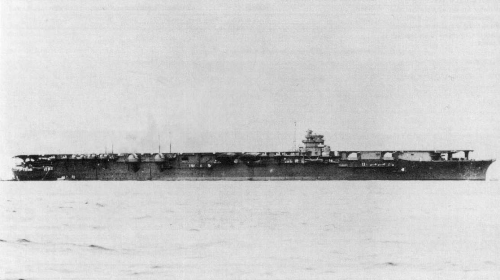
NAVYPEDIA
 Support the project with paypal
Support the project with paypal
Photo

Shokaku 1941
Ships
| Name | No | Yard No | Builder | Laid down | Launched | Comp | Fate |
|---|---|---|---|---|---|---|---|
| 翔鶴 [Shokaku] | Yokosuka K K | 12.12.1937 | 1.6.1939 | 8.8.1941 | sunk 19.6.1944 | ||
| 瑞鶴 [Zuikaku] | Kawasaki, Kobe | 25.5.1938 | 27.11.1939 | 25.9.1941 | sunk 25.10.1944 |
Technical data
| Displacement standard, t | 25675 |
|---|---|
| Displacement full, t | 32105 |
| Length, m | 236.1 pp 250.0 wl 257.5 oa |
| Breadth, m | 26.0 wl 29.0 fd |
| Draught, m | 8.87 |
| No of shafts | 4 |
| Machinery | 4 sets Kampon geared steam turbines, 8 Kampon boilers |
| Power, h. p. | 160000 |
| Max speed, kts | 34.2 |
| Fuel, t | oil 4100 |
| Endurance, nm(kts) | 9700(18) |
| Armour, mm | belt: 46 (165 abreast magazines), deck 90 (132 over magazines) |
| Armament | 8 x 2 - 127/40 89-shiki, 12 x 3 - 25/60 96-shiki, 84 aircraft (A5M, A6M fighters, D3A diving bombers, B5N torpedo bombers) |
| Electronic equipment | 0-shiki sonar |
| Complement | 1660 |
Standard scale images

Shokaku 1941

Zuikaku 1944
Graphics
Aircraft facilities
(fd - 7,024m², ha - 7,000m² / 33,600m³): Flight deck: 242.2x29.0m. Upper hangar: 190.0x~20.0x4.8m, lower hangar: 160.0x~20.0x4.8m. Lifts: fore (13.0x16.0m), medium and aft (13.0x12.0m). Aircraft fuel stowage: 1800t.
Project history
Shokaku and Zuikaku were designed in 1936-1937 as enlarged and improved version of Soryu. On architecture and structure they almost in accuracy repeated a prototype, however had strengthened protection, AA armament and more numerous air group. At the moment of the comppletion these ships were considered as the largest and most powerful purpose built aircraft carriers in the world. Seaworthiness of Shokaku, in comparison with Soryu, has notably improved. The hull became on one deck higher and has gained new contours: "clipper" stem with large bow flare and underwater bulb (here designers made use of experience of designing of the hull of Yamato class battleships). Two-level hangar was completely covered. In hangar there were aircraft refuelling and air bombs hooking posts that expedited preparing of air group for a launch, but increased danger of fire: here there was no protection against enemy bombs and shells.
Flight deck was covered by wood. Lifting of one aircraft spent 15 seconds, and a full cycle, including loading and discharging, 40 seconds. Armouring scheme basically repeated accepted on Soryu. External 46mm waterline belt was protected machinery. Armour deck over machinery had 90mm thickness (65 + 25), over magazines 132mm. Remaining decks, including flight deck, were made of 16-19mm construction steel. Local box protection of magazines reached 165mm thickness. In the second half of 1944 on Zuikaku aviation petrol tanks received additional protection from concrete.
Ship protection
Main 46mm belt protected only machinery, main 90mm (65mm armour on 25mm plating) lower hangar deck connected with its upper edge. Its thickness was 25mm at ship ends. Flight deck had 25mm thickness over fore part of ship and funnel uptakes. Magazines had 165mm vertical and 132mm horizontal protection. There was 76-25mm longitudinal anti-torpedo bulkhead.
Modernizations 6.
1942, both: + 4 x 3 - 25/60 96-shiki, 1-shiki 2-go radar
7/1943, both: + 2 x 3 - 25/60 96-shiki, 16 x 1 - 25/60 96-shiki
8/1944, Zuikaku: aircraft fuel tanks received additional concrete protection; + 5 x 2 - 25/60 96-shiki, 26 x 1 - 25/60 96-shiki, 8 x 28 - 120 AA RL, 3-shiki 1-go radar.
Naval service
Shokaku 8.5.1942 was damaged by American carrier aircraft (2 454kg bomb hits). Repair lasted till the end of June, 1942. 26.10.1942 she was again damaged by American carrier aircraft (six air bomb hits) and was under repair till March, 1943. 19.6.1944 during battle at Mariana Islands Shokaku received 3-4 torpedo hits from American submarine Cavalla and in 3 hours after attack has blown up and sunk.
Zuikaku 20.6.1944 was hard damaged by American carrier aircraft (one direct bomb hit and 5 near misses), was repaired till early August, 1944. During battle at Engano 25.10.1944 Zuikaku was sunk by American carrier aircraft of TF.38 (6-7 torpedo and 7 bomb hits).
 HOME
HOME FIGHTING SHIPS OF THE WORLD
FIGHTING SHIPS OF THE WORLD JAPAN
JAPAN AIRCRAFT CARRYING SHIPS
AIRCRAFT CARRYING SHIPS SHOKAKU aircraft carriers (1941)
SHOKAKU aircraft carriers (1941)

